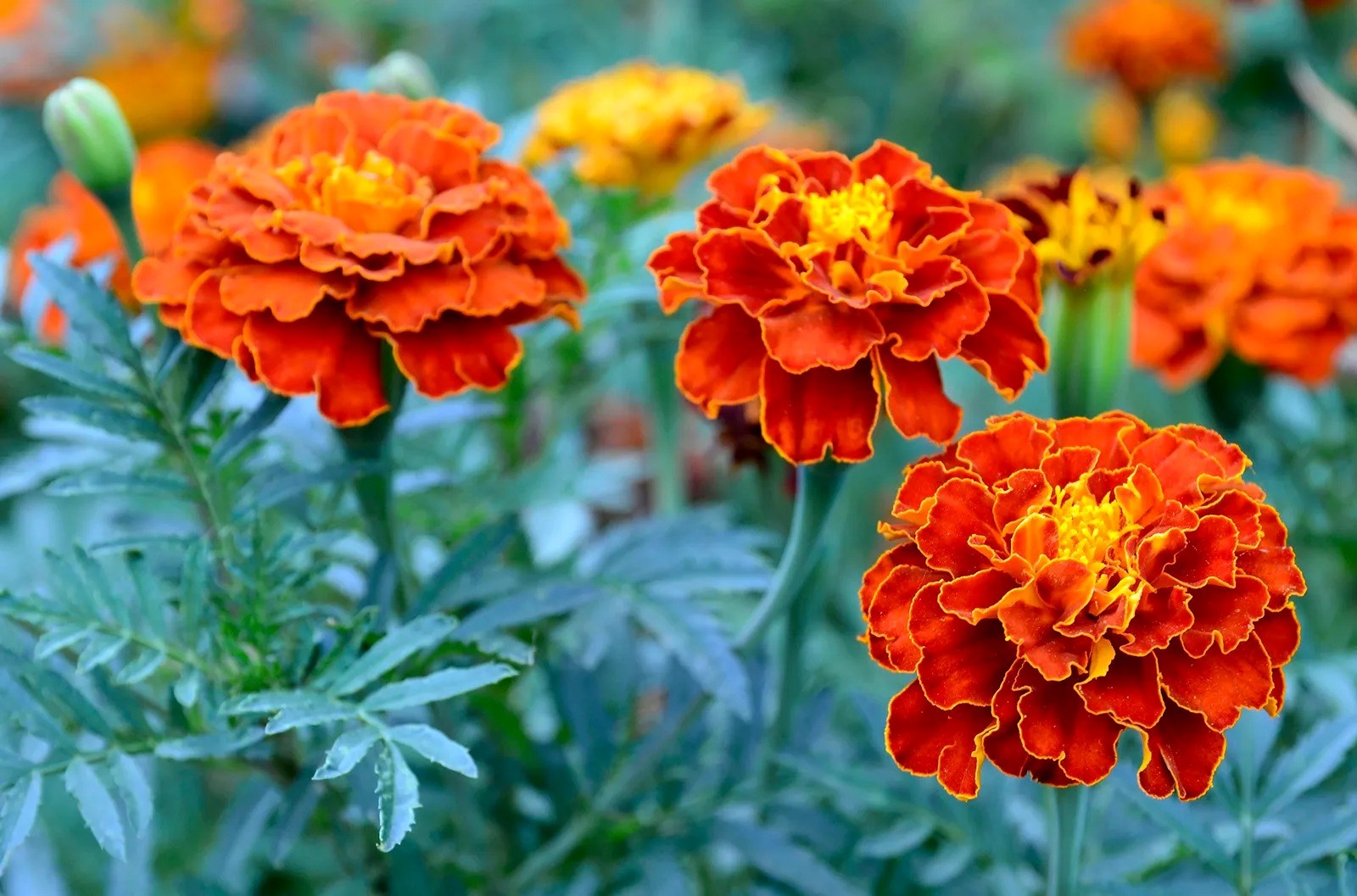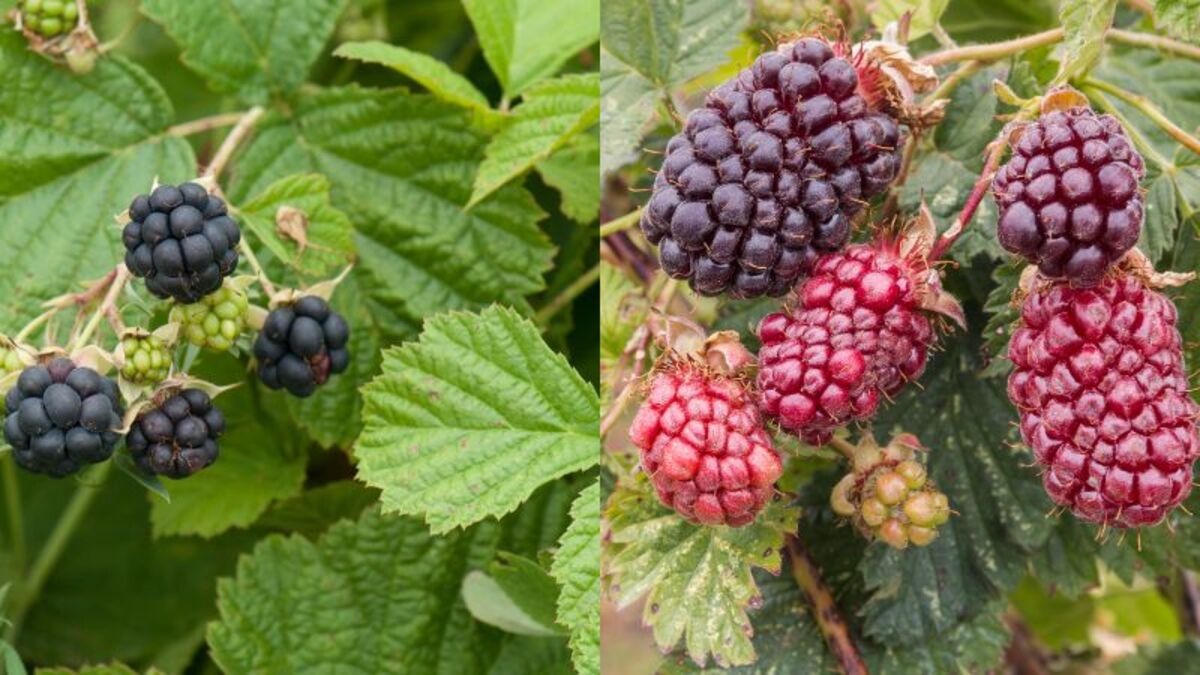Home>Science>Discover The Surprising Truth About Marigolds: Annuals Or Perennials?


Science
Discover The Surprising Truth About Marigolds: Annuals Or Perennials?
Modified: March 3, 2024
Uncover the science behind marigolds and find out whether they are annuals or perennials. Explore the surprising truth about these vibrant flowers.
(Many of the links in this article redirect to a specific reviewed product. Your purchase of these products through affiliate links helps to generate commission for Noodls.com, at no extra cost. Learn more)
Table of Contents
Introduction
Marigolds, with their vibrant hues and distinctive aroma, have long captivated gardeners and flower enthusiasts alike. These cheerful blooms are a common sight in gardens, adding a pop of color and a touch of warmth to any landscape. However, there's often confusion surrounding the lifespan of these beloved flowers. Are they annuals, blooming for just one season, or perennials, returning year after year?
In this article, we'll delve into the fascinating world of marigolds, unraveling the mystery behind their lifecycle. By exploring the characteristics of both annual and perennial marigolds, we'll shed light on their longevity and the factors that influence their growth. Whether you're a seasoned gardener or a curious nature enthusiast, this exploration will provide valuable insights into the surprising truth about marigolds. So, let's embark on this horticultural journey and uncover the secrets of these enchanting flowers.
What Are Marigolds?
Marigolds, scientifically known as Tagetes, are a diverse genus of flowering plants that belong to the daisy family, Asteraceae. These vibrant blooms are native to North and South America, where they have been cherished for centuries for their ornamental, medicinal, and culinary properties.
One of the most striking features of marigolds is their radiant and varied colors, ranging from golden yellows and oranges to deep reds and mahogany tones. Their distinctive aroma, often described as spicy or musky, adds to their allure, making them a popular choice for both gardeners and florists.
Marigolds are known for their resilience and adaptability, thriving in various climates and soil conditions. Their versatility extends to their uses, as they are commonly employed for decorative purposes in gardens, borders, and floral arrangements. Additionally, marigolds have been utilized in traditional medicine and pest control due to their natural insect-repelling properties.
There are two primary categories of marigolds: African marigolds (Tagetes erecta) and French marigolds (Tagetes patula). African marigolds are characterized by their large, robust blooms and upright growth habit, making them a striking focal point in garden beds and containers. On the other hand, French marigolds are more compact, with an abundance of smaller flowers in a wide array of colors, making them a versatile choice for edging, borders, and companion planting.
Beyond their aesthetic appeal, marigolds play a crucial ecological role, attracting beneficial insects such as bees and butterflies, while deterring harmful pests like nematodes. This dual function as a pollinator attractant and pest deterrent underscores the ecological significance of marigolds in garden ecosystems.
Intriguingly, marigolds hold cultural significance in many societies. They are often used in festivals, religious ceremonies, and traditional rituals, symbolizing concepts such as love, prosperity, and good fortune.
In summary, marigolds are not merely beautiful flowers; they are a symbol of resilience, versatility, and cultural significance. Their multifaceted nature and rich history make them a captivating subject of study and a beloved addition to gardens and landscapes worldwide.
The Annual Marigold
The annual marigold, or Tagetes, is a delightful and versatile flowering plant that has captured the hearts of gardeners and nature enthusiasts around the world. These vibrant blooms are renowned for their ability to add a burst of color and cheer to any garden or landscape. Annual marigolds, as the name suggests, complete their entire life cycle within a single growing season, from seed germination to flowering, seed production, and eventual senescence.
One of the most appealing aspects of annual marigolds is their rapid growth and prolific blooming. From the moment the seeds are sown, these resilient plants quickly establish themselves, producing an abundance of bright, eye-catching flowers. Their compact and bushy growth habit makes them an ideal choice for edging garden beds, lining pathways, or adorning containers and window boxes. The array of colors available, including sunny yellows, fiery oranges, and deep reds, ensures that there is a perfect annual marigold variety for every garden palette.
Annual marigolds are celebrated for their low-maintenance nature, thriving in full sun and well-drained soil. Their resilience in the face of challenging growing conditions, such as heat and drought, makes them a reliable choice for gardeners seeking a resilient and long-lasting floral display. Furthermore, these blooms possess natural pest-repelling properties, making them a valuable addition to organic gardening practices.
Gardeners often incorporate annual marigolds into their landscape designs for their versatility and ability to attract beneficial pollinators. Whether used as a vibrant border, a focal point in a mixed flower bed, or a companion plant in vegetable gardens, annual marigolds contribute to the overall health and beauty of the garden ecosystem.
As the growing season draws to a close, annual marigolds gracefully fulfill their lifecycle, culminating in the production of seeds for the next generation. While their individual existence may be fleeting, the seeds they leave behind ensure a continuous cycle of renewal and growth, perpetuating their legacy in the garden year after year.
In essence, the annual marigold embodies the spirit of vitality and resilience, offering a dazzling display of color and charm while playing a vital role in garden ecosystems. Its brief yet impactful presence serves as a reminder of nature's enduring beauty and the cyclical nature of life in the garden.
The Perennial Marigold
The perennial marigold, a source of enduring fascination for gardeners and horticultural enthusiasts, represents a captivating aspect of nature's resilience and longevity. Unlike its annual counterpart, the perennial marigold possesses the remarkable ability to persist and bloom for multiple growing seasons, enriching gardens with its enduring beauty and charm.
Perennial marigolds, also known as Tagetes, exhibit a remarkable capacity for longevity, with their lifecycle extending beyond a single year. This enduring nature allows them to establish deep roots in the garden, becoming a beloved and familiar presence for gardeners and visitors alike. Their ability to return year after year, often with increased vigor and abundance, adds a sense of continuity and permanence to garden landscapes.
One of the most striking attributes of perennial marigolds is their resilience and adaptability. These hardy plants are known for their ability to withstand varying environmental conditions, including fluctuations in temperature, soil types, and moisture levels. Their robust nature enables them to thrive in diverse climates, from temperate regions to arid landscapes, making them a valuable addition to gardens across the globe.
Perennial marigolds, with their enduring blooms and lush foliage, contribute to the ever-changing tapestry of the garden, providing a consistent source of color and visual interest throughout the seasons. Their ability to withstand the test of time and bloom year after year serves as a testament to the enduring beauty and vitality of nature.
Gardeners value perennial marigolds not only for their longevity but also for their ecological contributions. These enduring blooms attract a diverse array of pollinators, including bees, butterflies, and other beneficial insects, fostering a thriving and balanced garden ecosystem. Additionally, their natural pest-repelling properties contribute to the overall health and vitality of the garden, making them a valuable ally in organic gardening practices.
In summary, the perennial marigold stands as a symbol of resilience, longevity, and enduring beauty in the garden. Its ability to persist and bloom year after year enriches the landscape, providing a sense of continuity and vitality. As a cherished perennial presence in gardens worldwide, the marigold embodies the timeless allure of nature's enduring splendor.
Factors Affecting Marigold Longevity
The longevity of marigolds, whether annual or perennial, is influenced by a myriad of factors that shape their growth, resilience, and overall lifespan. Understanding these factors is essential for gardeners and enthusiasts seeking to optimize the health and longevity of their marigold plants. Let's explore the key elements that play a pivotal role in determining the longevity of these beloved blooms.
1. Environmental Conditions
The environmental factors, including sunlight, temperature, and soil quality, significantly impact the longevity of marigolds. Adequate sunlight is essential for robust growth and prolific flowering. Marigolds thrive in full sun, requiring at least 6-8 hours of direct sunlight daily. Additionally, they prefer well-drained soil with good fertility, which supports their overall health and longevity. Temperature fluctuations can also affect their growth, with marigolds exhibiting resilience to moderate heat but requiring protection from extreme heat or frost.
2. Watering and Moisture Levels
Proper watering practices are crucial for sustaining the longevity of marigolds. While these blooms are relatively drought-tolerant once established, consistent moisture is essential during their initial growth stages. Overwatering can lead to root rot and other issues, impacting their longevity. Striking a balance in watering frequency and maintaining optimal moisture levels in the soil is vital for promoting healthy growth and prolonged blooming.
3. Soil Nutrition and Fertilization
The nutritional content of the soil directly influences the vigor and longevity of marigolds. Rich, well-balanced soil provides essential nutrients for robust growth and continuous flowering. Organic matter and appropriate fertilization contribute to the overall health of the plants, enhancing their ability to withstand environmental stressors and thrive over an extended period.
4. Pest and Disease Management
Effective pest and disease management practices are critical for safeguarding the longevity of marigolds. These blooms are valued for their natural pest-repelling properties, but they are still susceptible to certain pests and diseases. Regular monitoring, proper sanitation, and timely intervention can prevent infestations and diseases, ensuring the sustained health and vitality of the plants.
5. Pruning and Deadheading
Pruning and deadheading play a significant role in prolonging the blooming period of marigolds. Removing spent flowers and trimming back leggy growth encourages continuous flowering and maintains the plant's vigor. This practice supports the longevity of the blooms and promotes a tidy, well-maintained appearance throughout the growing season.
6. Cultivar Selection
The choice of marigold cultivars can influence their longevity in the garden. Selecting varieties that are well-suited to the local climate and growing conditions can enhance their resilience and longevity. Additionally, considering the intended purpose, such as landscape design, container gardening, or companion planting, can guide the selection of cultivars that align with specific longevity goals.
By addressing these factors and implementing appropriate care practices, gardeners can nurture the longevity of marigolds, whether annual or perennial, and revel in their enduring beauty and charm throughout the seasons.
Conclusion
In conclusion, the enigmatic nature of marigolds, with their captivating blooms and diverse characteristics, has been unveiled through our exploration of their annual and perennial identities. Marigolds, whether annual or perennial, hold a special place in the hearts of gardeners and nature enthusiasts, offering a symphony of color, resilience, and ecological significance.
The annual marigold, with its rapid growth, prolific flowering, and natural pest-repelling properties, embodies the spirit of vitality and endurance. Its brief yet impactful presence in garden landscapes serves as a vibrant testament to the cyclical nature of life and the enduring beauty of nature's creations.
Conversely, the perennial marigold stands as a symbol of resilience and longevity, enriching gardens with its enduring blooms and robust nature. Its ability to persist and bloom year after year contributes to the continuity and vitality of garden landscapes, embodying the timeless allure of nature's enduring splendor.
Throughout our exploration, we have identified key factors that influence the longevity of marigolds, guiding gardeners in nurturing the health and vitality of these beloved blooms. From environmental conditions and watering practices to soil nutrition and pest management, these factors play a pivotal role in sustaining the enduring beauty of marigolds in garden landscapes.
As we reflect on the surprising truth about marigolds, we recognize their multifaceted significance, from their cultural symbolism to their ecological contributions. These enchanting blooms continue to inspire and captivate, serving as a reminder of nature's resilience and the enduring beauty found within the ever-changing tapestry of the garden.
In essence, marigolds, whether annual or perennial, transcend mere ornamental plants; they are living testaments to the enduring cycles of life, the resilience of nature, and the timeless allure of floral beauty. As they grace gardens with their vibrant hues and aromatic presence, marigolds stand as enduring symbols of vitality, continuity, and the enduring splendor of the natural world.













